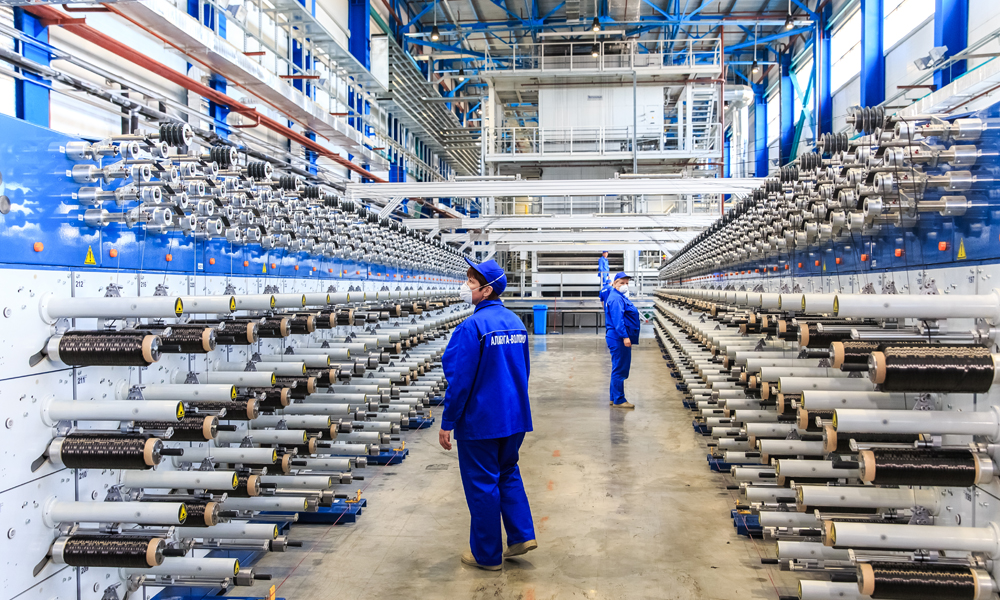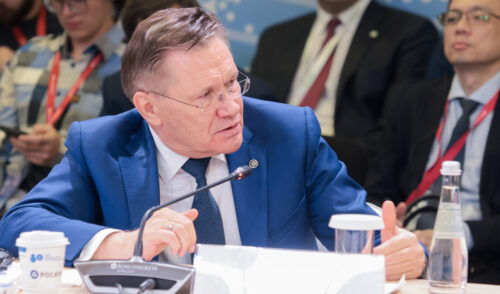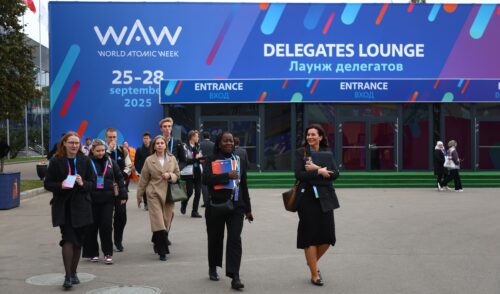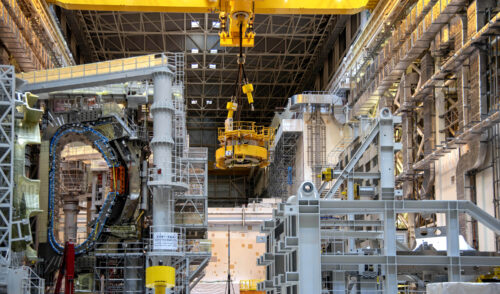
Rosatom’s New Businesses: Composite Materials
back to contentsUMATEX is a new name in the Russian industry of composite materials. Founded in 2016, UMATEX Group will manage Rosatom’s composite materials division comprising a research center and manufacturers of high-strength, high-modulus carbon fibers and carbon-based fabrics.
Composite materials are used in diverse areas. In the aircraft industry, carbon-based composites serve as a material for principal structural elements, such as wings, center wings, fins and many more. In automotive engineering, composites are also widely used to make both race cars and mass produced vehicles. Composite materials have also found use in the aerospace industry, medicine, design and many other areas.
What are the advantages of composites?
To answer the question, let us consider a few examples. In aircraft engineering, carbon-based composites help reduce the airplane weight by 30%, with structural robustness not compromised. Composite materials are also highly resistant to vibration and corrosion, thus greatly increasing the service life of a product and adding to its safety. By the way, air plane brakes are also made of composites ensuring a five to six time longer service life in comparison to ordinary brakes.
Apart from that, composites are widely used to enhance the safety of nuclear facilities. These advanced materials are essential for the construction and repair of nuclear power plants. Composites owe their durability to the high strength of carbon threads forming the material structure and exceptional adhesion between the matrix and the reinforcement material. Carbon-based composites have an advantage particularly valuable for the nuclear power industry. They resist corrosion and magnetism and preserve their properties at ultra-low temperatures. The latter allows for using carbon fibers at nuclear plants in any part of the globe regardless of the climate. Carbon fiber reinforcement ensures more than a twofold increase in the robustness of reinforced concrete and brick structures.
Carbon fiber reinforced nuclear buildings were the least hit by the severe earthquake in Japan in 2011. This opens up great prospects for carbon fibers to be used as a reinforcement material in nuclear facilities.
Plant of the future in Tatarstan
In 2016, Tatarstan-based Alabuga-Fibre, the largest UMATEX Group company, began manufacturing and exporting new products, such as UMT49 carbon fiber made in line with the highest global standards and similar to T700 produced by Toray, a global leader in the carbon fiber industry.
Other new products of the company are medium-strength UMT40 fiber for aircraft engineering and design, UMT42 for wind power and automotive industry and the high-modulus UMT400 with an elastic module of 400 GPa and above.
The UMATEX Group research center is working on the technology to synthesize polyacrylonitrile (PAN) precursor enabling the fabrication of high-strength (over 4.9 GPa) carbon fiber.
This technology will be deployed at a new UMATEX plant that will produce 5,000 tons of PAN precursors per annum. By late 2019, the plant to be built in the Saratov Region will begin supplying the Alabuga-Fibre and Argon facilities with feedstock and thus become the last link in the vertically integrated value chain, from feedstock supplies to finished products.
Apart from precursors, the company continues research on matrices and coupling agents. In 2016, the company developed a new formulation of the coupling agent for vinylester-compatible carbon fibers and put it into production. Vinylester matrices have found application in the ship building industry due to its high resistance to aggressive media, particularly sea water. Vinylester-compatible carbon fibers are also used in the production of sheet molding compounds (SMC) for automobile parts. UMATEX Group will release this product in the second quarter of 2017.
Development of an end-to-end value chain is a priority for the company. As part of this effort, the group is working to set up the production of filament-wound composite pressure vessels.
Local production of wind turbines
In early 2017, Rosatom’s Integrated Thermal Power Company (OTEK) announced its cooperation with Lagerwey, a Dutch wind power plant vendor, to develop the production of wind power generators in Russia. As a stakeholder of the project, UMATEX Group will take on the manufacture of wind turbine blades. According to expert estimates, Russia’s wind power market can make 200 billion rubles per year by 2024, with power generation to reach 3.6 GW.
To facilitate export sales, the company has opened distributor offices in the Czech Republic and China. Both of them have well-supplied warehouses and ensure quick order processing and deliveries.




